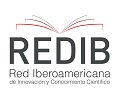Determinación de la curva de lactancia de cabras Saanen del noroeste argentino
DOI:
https://doi.org/10.14409/favecv.v17i1.7159Palabras clave:
cabras, lactancia, curva de producciónResumen
La curva de lactancia puede ser definida como la expresión del comportamiento productivo del rebaño caprino. Conocerla resulta una herramienta de selección. El objetivo del presente trabajo fue el de estudiar el comportamiento productivo de cabras Saanen en condiciones semi intensivas mediante diferentes modelos matemáticos para describir así su curva de lactancia, caracterizar la evolución de la producción de leche y analizar su variación asociadas con el número de lactancia y el número de cabritos al parto. Se utilizaron registros de datos de lactancias correspondientes a 182 animales. De cada animal fue relevado el número de partos, el tipo de parto y la producción individual diaria a partir del tercer día pos parto hasta el final de lactancia (270 días). El modelo de Cappio-Borlino fue el que mejor ajuste presentó. Al analizar los resultados obtenidos en cuanto al momento en el que se alcanza el pico de producción se observa que, además de ser numéricamente menor, las cabras de primer parto son las que lo manifiestan más tardíamente respecto a las multíparas. A su vez, los animales con partos dobles si bien presentaron una mayor producción láctea al principio de la lactancia, la persistencia fue menor respecto a los de partos triple.
Citas
Browning R, Leite-Browning ML, Sahlu T. 1995. Factors affecting standardized milk and fat yields in Alpine goats. Small Rumin. Res. 18:173-178.
Bruckmaier RM, Ritter C, Schams D, Blum JW. 1994. Machine milking of dairy goats during lactation: udder anatomy, milking characteristics, and blood concentrations of oxytocin and prolactin. J. Dairy Res. 61:457-66.
Cappio-Borlino A, Pulina G, Rossi G. 1995. A non-linear modification of Wood’s equation fitted to lactation curves of Sardinian dairy ewes. Small Rumin. Res. 18: 75-79.
Cobby JM, Le Du YLP. 1978. On fitting curves to lactation data. Anim. Prod. 26: 127-133.
Dhanoa MS. 1981. A note on an alternative form of the lactation model of Wood. Anim. Prod. 32: 349.
Dave BK. 1971. First lactation curve of Indian water buffalo. Jawaharlal Nehru Krishi Vishwa Vidyalaya Research Journal. 5: 93.
Dematawewa CMB, Pearson RE, Van Raden PM. 2007. Modeling extended lactations of Holsteins. J. Dairy Sci. 90: 3924-3936.
Fernández G. 2000. Parámetros productivos de cabras Pardo Alpinas y sus cruzas, bajo régimen de pastoreo. Producción Latina 25:541-544.
Gaddour A, Najari S, Ferchichi A. 2009. Lactation curve of local goat, pure breds and crosses in southern Tunisia. J. Appl. Anim. Res. 36: 153-157.
Gall C. 1981. Milk production. En: Goat production. Academic Press. New York. pp. 309-344.
Gaskins CT, Anderson DS. 1980. Comparison of Lactation Curves in Angus-Hereford, Jersey-Angus and Simmental-Angus Cows. J. Anim. Sci. 50: 828-832.
Gipson TA, Grossman M. 1989. Dyphasic analysis of lactation curves in dairy goats. J. Dairy Sci. 72: 1035-1044.
Gipson TA, Grossman M. 1990. Lactation curves in dairy goats: a review. Small Rumin. Res. 3: 383-396.
Gutman G, Iturregui ME, Filadoro A. 2004. Informe Cepal: Propuestas para la formulación de políticas para el desarrollo de tramas productivas regionales: El caso de la lechería caprina en Argentina. 94pp.
Hayden TJ, Thomas CR, Forsyth IA. 1979. Effect of Number of Young Born (Litter Size) on Milk Yield of Goats: Role for Placental Lactogen. J. Dairy Sci. 62: 53-57.
León JM, Quiroz J, Pleguezuelos J, Martínez E, Delgado JV. 2007. Curva de lactación para el número de lactación en cabras murciano-granadinas. Arch. Zootec. 56: 641-646.
Macciotta NPP, Fresi P, Usai G, Cappio-Borlino A. 2005. Lactation curves of Sarda breed goats estimated with test-day models. J. Dairy Res. 72: 470-475.
Majid A, Cartwright TC, Yazman JA, Fitzhugh, HA. 1994. Performance of five breeds of dairy goats in Southern United States. II. Lactation yield and curves. World Rev. Anim. Prod. 29: 30-37.
Masselin S, Sauvant D, Chapoutot P, Milan D. 1987. Les modèles d’ajustement des courbes de lactation. Ann. Zootech. 36: 171–206.
Milerski M, Marek V. 2001. Analysis of systematic factors affecting milk production in dairy goat. Acta Univ. Agric. et Silvic. Mendel. Brun (Brno). 1: 43-50.
Montaldo H, Almanza A, Juárez A. 1997. Genetic group, age and season effects on lactation curve shape in goats. Small Rumin. Res. 24: 195-202.
Morand-Fehr P, Sauvant D.1980. Composition and yield of goat milk as affected by nutritional manipulation. J. Dairy Sci. 63: 1671-1680.
Prasad S. 2003 Modeling of lactation curves of dairy animals, J. Appl. Anim. Res. 24: 79-84.
Rota AM, Gonzalo C, Rodríguez PL, Rojas AI, Martín L., Tovar JJ. 1993. Effects of stage of lactation and parity on somatic cell counts in milk of Verata goats and algebraic models of their lactation curves. Small Rumin Res. 12: 211–219.
Rojo-Rubio R, Kholif AE, Salem AZM, Mendoza GD, Elghandour, MMMY, Vazquez-Armijo, JF, Lee-Rangel H. 2016. Lactation curves and body weight changes of Alpine, Saanen and Anglo-Nubian goats as well as pre-weaning growth of their kids. Journal of Applied Animal Research. 44: 331-337.
Ruvuna F, Kogi JK, Taylor JF. 1995. Lactation curves among crosses of Galla and East African with Toggenburg and Anglo Nubian goats. Small Rumin. Res. 16: 1-6.
SAS. 2002. SAS® 9.0. Copyright (c) 1999-2002 by SAS Institute Inc., Cary, NC, USA.
Serchand L, McNew RW, Kellogg DW, Johnson ZB. 1995. Selection of a mathematical model to generate lactation curves using daily milk yields of Holstein cows. J. Dairy Sci. 78: 2507-2513.
Stefanon B, Colitti, M, Gabai G, Knight CH, Wilde CJ. 2002. Mammary apoptosis and lactation persistency in dairy animals. J. Dairy Res. 69: 37-52.
Steine TA. 1975. Test day records and part lactations in goat. Meld. Nor. Landbrukshoegsk. 54: 31-21.
Vargas B, Koops WJ, Herrero M, Van Arendonk JAM. 2000. Modeling extended lactations of dairy cows. J. Dairy Sci. 83: 1371-1380.
Waheed A, Khan MS. 2013. Lactation curve of Beetal goats in Pakistan. Archiv Tierzucht. Archives Anim. Breeding. 56:89.
Wahome RG, Carles AB, Schwartz HJ. 1994. An analysis of the variation of the lactation curve of small east African goats. Small Rumin. Res. 15: 1-7.
Wilde CJ, Knight CH. 1989. Metabolic adaptations in mammary gland during the declining phase of lactation. J. Dairy Sci. 72: 1679-1692.
Wilmink JBM. 1987. Adjustment of test-day milk, fat and protein yield for age, season and stage of lactation. Livestock Prod. Sci. 16: 335–348.
Wood PDP. 1967. Algebraic models of the lactation curves for milk, fat and protein production with estimates of seasonal variation. Anim. Prod. 22: 35-40.
Wood PDP. 1980. Breed variation in the shape of the lactation curve of cattle and their implications for efficiency. Anim. Prod. 34: 133-141.
Yadav MC, Katpatal BG, Kaushik SN. 1977. Study of lactation curve in Hariana and its Friesian crosses. Ind. J. Anim. Sci. 47: 607-609.
Zeng SS, Escobar EN, Popham T. 1997. Daily variations in somatic cell count, composition, and production of Alpine goat milk. Small Rumin. Res. 26: 2153-260.
Descargas
Publicado
Cómo citar
Número
Sección
Licencia
FAVE Sección Ciencias Veterinarias ratifica el modelo Acceso Abierto en el que los contenidos de las publicaciones científicas se encuentran disponibles a texto completo libre y gratuito en Internet, sin embargos temporales, y cuyos costos de producción editorial no son transferidos a los autores. Esta política propone quebrar las barreras económicas que generan inequidades tanto en el acceso a la información, como en la publicación de resultados de investigaciones.
Los artículos de la revista son publicados en http://bibliotecavirtual.unl.edu.ar/publicaciones/index.php/FAVEveterinaria/issue/current/, en acceso abierto bajo licencia Creative CommonsAtribución-NoComercial-Compartir Igual 4.0 Internacional.











